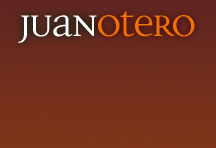The principality of Asturias is an Autonomous Community situaded in the north of Spain, between Galicia, Cantabria and Castille Leon. If faces the Cantabrian Sea and is separated from the Castillian meseta by the lofty peaks of the Cantabria Range. This ancient land has enjoyed the titlle of Principality since the xIV century, and right down to the presente day the heir to the Spanish throne becomes Prince of Asturias.
With a temperate climate and mild temperatures all year round, this paradise between the sea and the montains covrs over 10.000 kms 2 and is home to more tha a million people.
Asturias provides a natural habitat for such stricking species as the brown bear, grouse, deer, golden eagle or salmon , all of which and more adorn landscapes of great natural beauty. The Picos de Europa, the Somiedo and Redes nature parks, the forest of Muniellos and Peloño, are but a few of the protected areas in the Principality, but alongside the forests and mountains, mention must also be made of the rivers and streams,waterfalls, beaches and secluded coves scattered along 345 km 2 of coast
Apart from its wealth of wildlife and countryside, Asturias has other treasures to offer that should not be overloocked:a rich and varied gastronomy, a historical and cultural heritage of the first ordr and the many popular traditions that they are still actively pursued.
The gastronomy of Asturias is one of the elements that have done most to spread the fame of the region, and is of the keynotes of its tourist offer. The most representative dish is “fabada”, a rich stew of Asturias beans and spicy sausage, but there are many others prepared from produce of this land, without , o course, forgetting the abundance of seafood:fish such as hake, monkfish,(here called “pixin”), sea bream, bass, tuna, elvers,etc., and among the he shelfish many varieties of lobster and crab, no to mention oysters, goose barnacles and sea-urchins.
Red meat”carne roja”, kid, lamb and venison are the basis of many regional specialities, while no visitor should leave without trying free-range chicken “pito de caleya”, or one of the myriad dishes derived from the traditional pig slaugther.
There are cheeses, from very strong to mild, to suit all palates: Cabrales,Gamonedo, and Afuega el Pitu
The visitor should also be sure to sample the traditional and most representative drink of the Asturians:CIDER. Low in alcohol,ot is poured, well chilled,from a bottle held high above the head, into a a wide-rimmed glass, or sometimes, in cider halls, spurts directly from the barrel.
From the historical nd cultural point of view, a variety of finds and events have put Asturias on the map: The Tito Bustillo caves, the forts of Coaña,etc. San Julian de los Prados, Santa Maria del Naranco,San Miguel de Lillo,are the most representative in Asturias Romanesque and pre-Romanesque.
The emigration to the Americas, is seen in villas known as “Indianas”, an original style as The Palace of Sotiello(piloña),Villa Rosario(Ribadesella), etc
Climbing, hill walking and potholing , horseback and mountain bike outings, are among the many options Asturias offers those who want to get closer to nature and discover some of the most attractive beauty spots in a less convencional way, through the practive of active tourism.
The many fiestas that take place throught the year, but especially during the summer, over the lenght and breadth of Asturias, are yet noter of the delights this region has to offer.

Juan Otero
META
Juan Otero:Diario de un Rural Worker está gestionado con WordPress
Entradas (RSS) y Comentarios (RSS).
JuanOtero: Diario de un Ruralworker by Juan Otero is licensed under a Creative Commons Reconocimiento-No comercial-Sin obras derivadas 2.5 España License